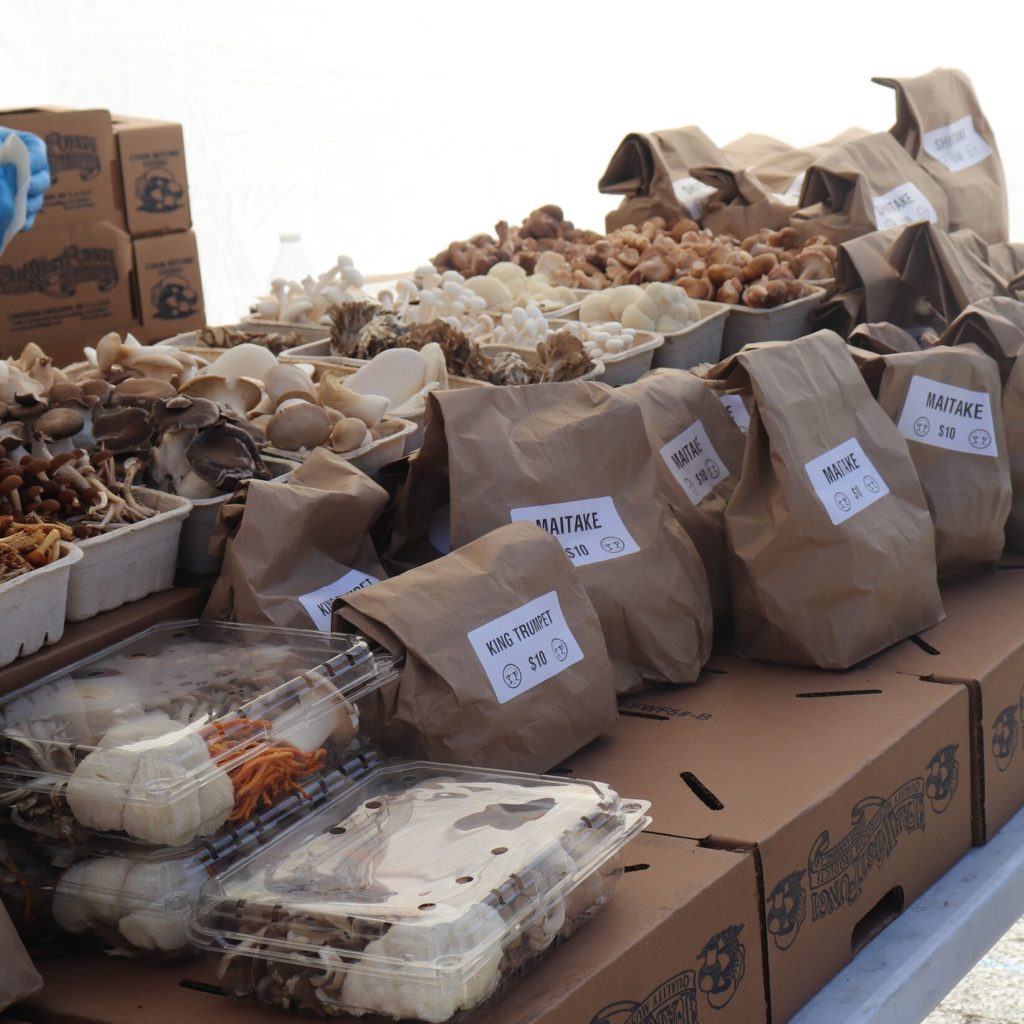Farmers Market Shopping
Shun is a Japanese philosophy that food should be eaten when it is in season to get the fullest flavor. There is a Japanese practice honoring the food by eating something that is just coming into season, something that is at the peak of its season, and something that is going out of season. By bringing these foods together, you experience the miraculous cycle of life.
Farmer’s Market Shopping is a way of honoring Shun. When that first daikon shows up and the carrots are at their peak, I know it is time to pickle them together and make a delicious Banh Mi Sandwich.
“Food tastes naturally delicious when it has been grown with care, harvested at the right moment, and brought to us immediately, direct from the producer.” Alice Waters

I am lucky to live in the San Francisco Bay Area where Farmers Markets abound year-round. There are times when the rest of my family is sleeping in and I will get to the market early. The crowds have not started to gather, and the selection of seasonal fruit and vegetables are at their peak. Although I like getting surprised by what I will find, you may want to know what is in season now, so check out this USDA guide.
Benefits of shopping at your local Farmers Market
I enjoy shopping at the Farmers Market – talking to farmers, seeing the vivid colors of fresh fruit and vegetables. Your carbon footprint is reduced when you are buying from your local farmer. The food does not have to go through a long supply chain from distributions centers to repackaging centers. By bringing your own reusable bags, you can shop plastic free. If there is no farmers market in your area see if there is a CSA (Community Supported Agriculture) where you can buy direct from the farmers. It will be more affordable than buying organic from a big chain and may push you out of your comfort zone to try a vegetable in season that you have never cooked before.

Support your local sustainable farming practices. The nutrients in the soil can be replenished through crop rotation. The sustainable practices include carbon sequestering to reduce global climate change, where carbon dioxide is captured in the soil. By growing cover crops, there is less soil erosion and the soil holds more water. Natural, organic agricultural methods not only produce wholesome vegetables, but ensures that the farm regenerates and can continue to produce high quality food.

Often the farmer can tell you how long the produce will last or that you need to eat this mushroom in the next day or two and those avocados will be ripe in two to three days. This helps you with planning what you’re going to cook for the week and stop wasting food because it goes bad before you can use it.
Celebrate the imperfections. Natural foods have varying colors, shapes, and include blemishes. Enjoy this. Celebrate the carrots that grow together around each other. The knots in the beet are there to remind you that they grew in their own unique way


The farmers market is about building community. They are fun and you often see your neighbors and friends shopping there. When we first had kids, we visited the farmers market, meeting other new parents. While one parent shopped, the other was with the kids listening to music or snacking on some of the fruits we purchased. This is how we met some of our closest friends over 10 years ago. As the kids grew up, they would pick out the vegetables and then take pride in cooking and eating them. The kids pictured here are all teenagers now who grew up together eating their vegetables.
How to visit the Farmers Market
If it is your first-time shopping at the farmers market, you want to wander and explore all the stands to see what they are selling. FOMO may make you buy a vibrant looking pepper, only to find two stalls down is the farmer that has every variety of pepper you could ever want.
Shop organic where possible. Ask certified local growers about their practices. Some may be on their way to becoming organic and if not ask them why.
Farmers markets have adapted to Covid-19 and how to manage social distancing. Many restrict the number of people that can enter, and stalls have lines for people to stand six feet apart. They also control the flow of people with an entry and exit to each stall. Like many European markets, the farmers pick the produce for you and place it in your bag or in a box or bin for you to later transfer to your own bag.

Local harvest can help you find a farmers market near you. And for those of you in California like me, here are the top 10 farmers markets. For other resources, check the Farmer’s Almanac and their guide to what is in season in the US. Pick your region, then choose a season and get the list of fruits and vegetables that are in season. The Center for Urban Education about Sustainable Agriculture (CUESA) farmers can provide you with inspiration on what to shop for at your farmers market to ensure you have a well-stocked pantry. If you are on a budget, Spruce eats has a guide to the cheapest fruits and vegetables by month. Later transfer to your own bag.